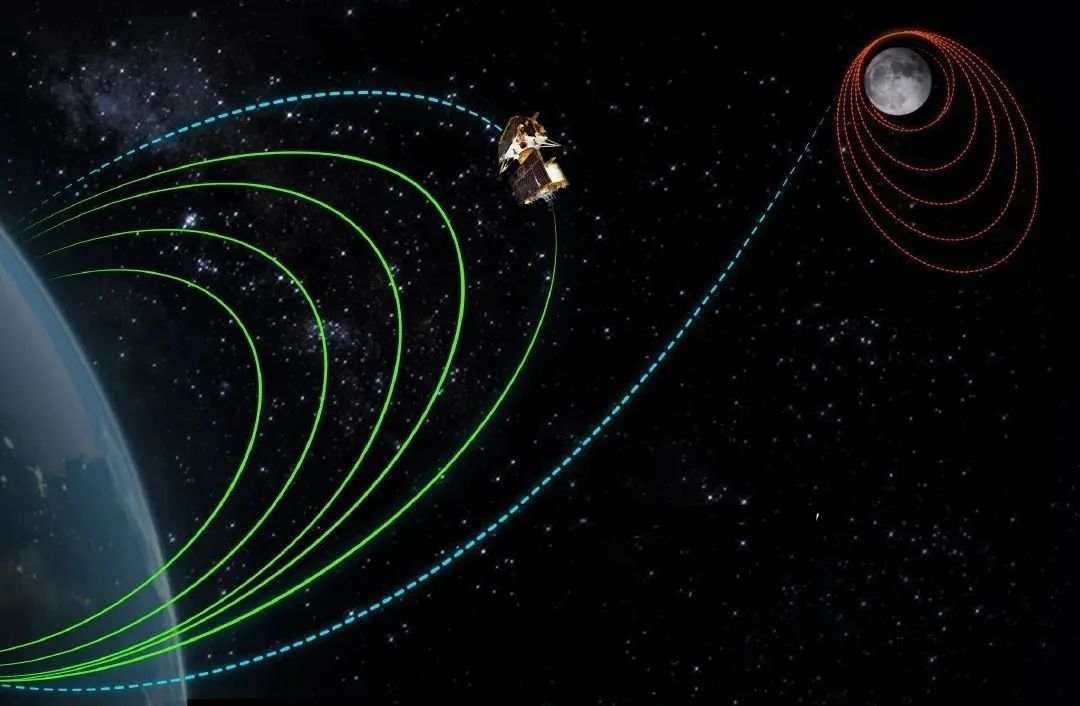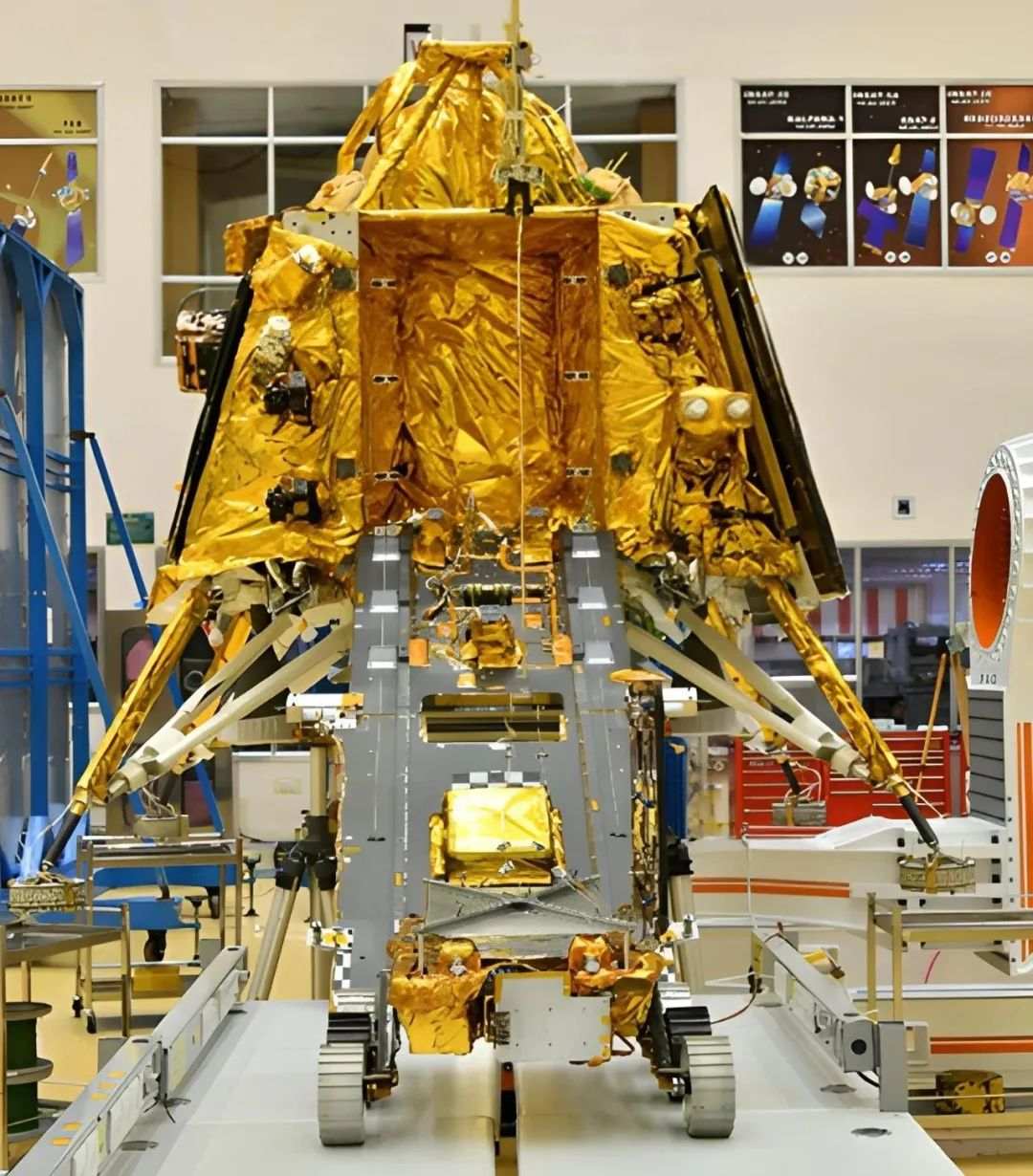The Indian lunar probe "Moonship 3" successfully made a soft landing on the moon
On August 23rd local time, the Indian lunar probe "Lungshan-3" successfully made a soft landing on the surface of the South Pole of the Moon. The lunar rover "Lungshan-3" was launched on July 14th, including a lunar lander and a lunar rover.
"Moonship 3" is India's third lunar probe landing project. The success of the project means that India will become the fourth country to achieve a landing on the surface of the moon.
In 2008, India launched its first lunar probe, Luna 1, which obtained a large amount of images and exploration data. However, the originally planned two-year operation of "Moonship 1" was lost in August 2009. In July 2019, India launched the Lunar 2 probe, but its lander lost contact during an attempt to make a soft landing on the lunar surface in September of that year.
[News link]
At 20:34 Beijing time on August 23, the Indian lunar rover Luna 3 successfully made a soft landing near the South Pole of the Moon at 69.37 degrees south latitude and 32.35 degrees east longitude, making India the fourth member of the Lunar Landing Club. Looking back on the more than one month journey to the moon, what are the characteristics of the mission progress of the Lunar Ship 3 probe? What advanced instruments are equipped? Looking at the history and future plans of Indian lunar exploration, what missions and dreams does it embody in Indian space?
Relay carrying the dream of exploring the moon
In fact, "Lungshan-3" is not the first time that Indian aerospace has set its sights on the moon. It can be said that India's path to lunar exploration has gone through ups and downs before.
Moonship 3 landing on the lunar surface animation demonstration
In October 2008, India launched its first lunar exploration vehicle, the "Lungshan-1", which was also India's first deep space mission. This lunar rover includes one orbiter and one impactor detector, which conducts detailed surveys of the surface and interior of the moon through inspections and impacts, and sends back a large amount of data. By analyzing these exploration results, scientists have preliminarily determined that there are solid water ice resources on the moon. This can also be regarded as the most important discovery of "Moonship 1".

Although at the end of August 2009, the lunar ship 1 malfunctioned due to overheating of its internal instruments, lost contact with the ground, and was forced to terminate its mission, it basically achieved the expected goals of Indian space.
India's second lunar exploration mission was more challenging - following the Soviet Union, the United States, and China, the probe attempted a soft landing on the lunar surface. On July 22, 2019, the lunar vessel 2 probe was launched into space. It includes one orbiter and one lander, with the main task of observing and safely landing at the South Pole of the Moon, collecting water ice, rock, and soil samples. Unfortunately, the lander lost contact about 2.1 kilometers from the lunar surface and was later discovered to have crashed.
However, we cannot assume that "Moonship 2" has completely failed. Its orbiter is still orbiting the moon, providing data for lunar scientific research and future exploration missions, and successfully establishing a communication connection with the lunar rover "Luna 3". In addition, many scientific instruments on board the "Lunar 2" spacecraft were independently developed by India, which has honed the development of India's aerospace supporting industry and accumulated experience for the next lunar exploration mission.
Ambition ultimately leads to success
According to publicly available information, the lunar rover Lunar 3 includes one propulsion module, one lander, and one lunar rover.
Schematic diagram of the route of "Moon Ship 3" to the moon
Specifically, the propulsion module presents a box shaped structure, equipped with large solar panels and communication equipment, and acts as a relay satellite during its flight to the moon.
On the journey to the moon, the propulsion module successively drove the probe to raise the altitude of the near Earth orbit for 5 consecutive times. On August 1st, it entered the Earth Moon transfer orbit, and on August 5th, it entered the lunar orbit. Then, it slowly lowered the orbit altitude several times to prepare for landing on the moon.
Looking at it from a different perspective, the orbit design of "Lungshan-3" can certainly save fuel, but it also reflects the insufficient capacity of the Indian LVM3 rocket, increasing the risk of excessive fuel consumption during orbital changes. There is a certain lucky factor in successfully landing the moon.

It is worth noting that the lander of "Moon Ship 3" is over 200 kilograms heavier than its predecessor, reflecting the upgrade of its loading equipment and safety measures. After a successful landing, the lander needs to use a ramp to release the 26 kilogram Pragian lunar rover, officially exploring the surface of the moon.
This 6-wheeled solar lunar rover will maintain communication with the Earth team in the future through landers, lunar rover 2, and other means. It is equipped with a laser induced breakdown spectrometer and α Particle X-ray spectrometer. Among them, the X-ray spectrometer stands out at the front end of the lunar rover and rotates 90 degrees to study the material below, reveal the chemical composition of the lunar surface, and help scientists determine the elemental composition of the soil and rocks around the landing area.
The lander also carries a seismometer and plans to conduct scientific experiments to detect lunar earthquakes, hoping to obtain clues about the internal structure of the moon. In addition, for the first time, the lunar rover "Lungshan-3" has detected the plasma generated by charged particles of solar radiation on the lunar surface and conducted in-situ thermal probe experiments on the moon. Through laser pulses from various devices, scientists have the potential to better study the gravitational interactions between the Earth Moon system and the interior of the Moon, understand the physical properties of lunar soil such as thermal conductivity and density, and guide future exploration of lunar resources.
From the perspective of India's entire lunar exploration project plan, the Indian space agency has high expectations for the "Lunchcraft 3". As early as the launch, it confidently stated that it will prove India's strength as an "emerging technology powerhouse" in technological innovation and scientific research, and help India establish a "leading position" in the global space technology field.
Future challenges reach a higher peak
Moonship 3 played an important role as a bridge between the past and the future in India's lunar exploration program. Previously, India proposed a lunar exploration mission plan consisting of four stages: orbit exploration, landing exploration, lunar surface sampling, and sampling return. Among them, "Lunar Ship 1" has achieved a circumnavigation detection mission and also implemented lunar surface impact detection; The goal of "Moon Ship 2" was to master lunar soft landing technology and conduct patrol exploration. Unfortunately, it failed and was handed over to "Moon Ship 3" for implementation.
Assembly and testing of the lunar rover and the lunar rover on the lunar ship 3 lander
In addition, India and Japan are jointly advancing the development of a lunar polar exploration mission. Although it has not been officially approved, it has been referred to by India as "Moonship 4" and is expected to be launched from 2026 to 2028. According to the plan, after landing near the South Pole of the Moon, the lunar rover "Lunzhou-4" will use an Indian developed drilling rig to drill underground samples of the Moon and heat them up to analyze whether they contain volatile substances, especially water ice resources. The lander will also validate lunar night survival technology, with a design lifespan of up to 6 months, in order to support more complex lunar exploration missions in the future.
In order to enhance its space autonomy, India is currently debating the launch of the "Lunchcraft 5" project, which may take place around 2030. Its positioning and function are similar to that of "Luna 4", and it is also planned to land at the South Pole of the Moon, but it will be led by India to develop a large lunar rover and drill samples for in-situ research.

Furthermore, India is still considering a long-term mission plan for lunar sampling and return, which may be named "Lunar Ship 6", but the implementation time will be after 2030.
It is not difficult to see that India's lunar exploration plan has chosen a macro development strategy of "orbiting, landing, and returning". However, based on its own capabilities and international cooperation environment, India has focused on planning sampling and exploration missions in the southern region of the moon.
In addition to conducting lunar exploration cooperation with Japan and seeking to carry American and European instruments, India has also signed the Artemis Agreement led by the United States, which will strengthen cooperation with the United States in lunar exploration. For example, the selection of the landing site for "Luna 3" is the result of Indian researchers balancing high-resolution photos and data from the "Luna 2" orbiter and the US Lunar Reconnaissance Orbiter. During the landing of the lunar rover, NASA's deep space network was supported by multiple large antennas.
In the future, India may engage in in-depth exchanges with the West in the field of lunar exploration, introduce key technologies, develop more advanced lunar probes, and even develop next-generation rockets and spacecraft that integrate Western technology to participate in manned lunar missions. From this perspective, as long as we persistently push forward, the prospects of India's lunar exploration project are still worth looking forward to.




